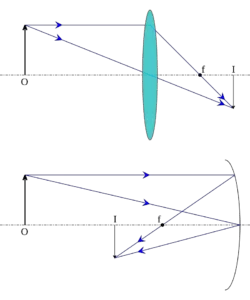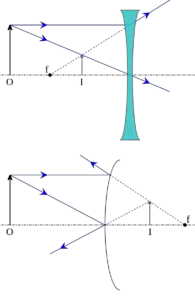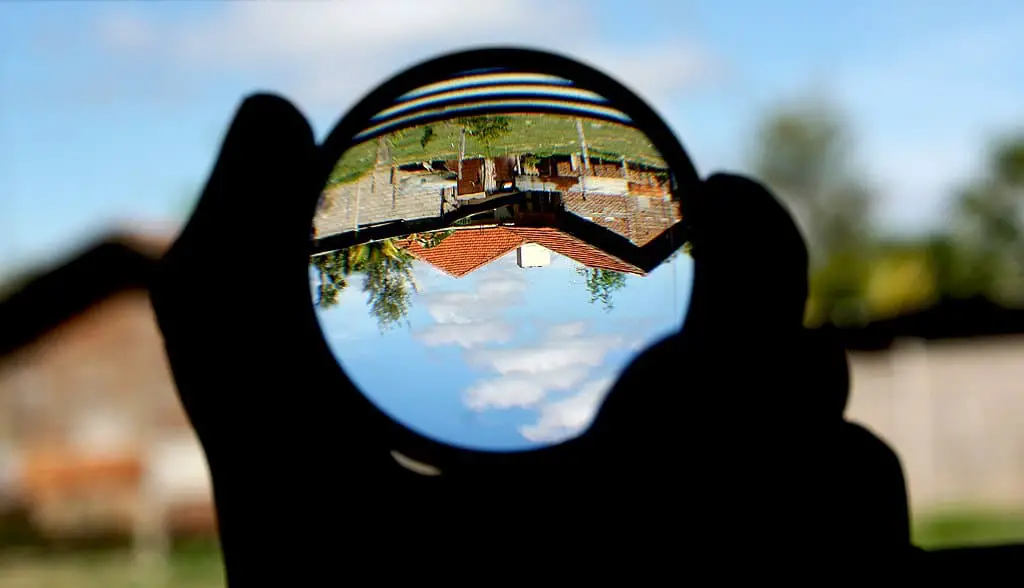According to Optics, if a beam of light gets reflected or refracted after falling on any object then an image of the object is formed. But there are two types of images that we generally see in our day-to-day life. These are real images and virtual images. Are you curious to find out the difference between these two?
Real Image is always inverted. On the other hand, Virtual image is always erect. No wonder, there are so many differences as well as similarities between them. Before getting into the concrete knowledge of the types of images, let’s have a comparison between the two in a tabular form:
Difference Between Real and Virtual Image
| Real Image | Virtual Image | |
| 1. | A real image is formed when reflected/refracted rays actually meet. | A virtual image is formed when reflected/refracted rays are diverted in real but appear to meet virtually. |
| 2. | Real Images are always inverted. | Virtual images are always erect. |
| 3. | Real images can be obtained on the screen. | Virtual images cannot be obtained on the screen. |
| 4. | Real Images are formed in front of the reflecting surface (mirror) and behind the refracting surface (lens). | Virtual Images are formed behind the reflecting surface (mirror) and in front of the refracting surface (lens). |
| 5. | Examples of real images include images formed on the cinema screen in movie theatres, images formed on the retina in our eyes, etc. | Examples of virtual images include images formed on plane mirrors used in the home, images formed on rearview mirrors of vehicles, etc. |
What is a Real Image?

By definition, a real Image is formed when two or more rays of light intersect (in real) after reflection or refraction. Since real images are formed by the actual intersection of rays therefore they can be obtained on the screen. Real images are always inverted.
Formation of Real Images in case of Mirrors and Lenses
- Images formed by concave reflecting surfaces (except in one case, when the object is placed between the Pole and the Focus of the reflecting surface).
- Images formed by convex refracting lenses (except in one case, when the object is placed between the optical center and the Focus of the lens).
Real Image Examples in Daily Life
Examples of real images include:
- Images formed on the cinema screen in movie theatres
- Images formed on the retina in our eyes
- Images formed by magnifying glass, microscopes, etc.
What is a Virtual Image?

By definition, a virtual image is formed when at least two rays of light diverge (in real) but intersect virtually after reflection or refraction. Since virtual images are formed by the virtual intersection of rays therefore they cannot be obtained on the screen. Virtual images are always erected.
Formation of Virtual Images in case of Mirrors and Lenses
- Images formed by convex reflecting surfaces.
- Images formed by concave reflecting surfaces (when the object is placed between the Pole and the Focus of the reflecting surface).
- Images formed by concave refracting lenses.
- Images formed by convex refracting lenses (when the object is placed between the optical center and the Focus of the lens).
Virtual Image Examples in Daily Life
Examples of virtual images in daily life include:
- Images formed on plane mirrors used in home
- Images formed on rearview mirrors of vehicles
- Images formed by mouth mirrors used in dental clinics
- Images formed on convex mirrors used for security and safety in shops, sharp turns on roads, or big rooms
- Images formed by the eyepiece lens of the binoculars, etc.
That’s it for this post. If you like this article, share it if you like, and like it if you share it. You can also find us on Mix, Twitter, Pinterest, and Facebook. Hey man, If you have come this far, do give us feedback in the comment section. It would make my day. You can also make a donation. Your donations will help us to run our website and serve you BETTER. Cheers!!!
You might also like:
- Applications and Uses of Convex Mirror in Daily Life
- Applications & Uses of Concave Mirror in Daily Life
- Difference Between Concave and Convex Mirrors in Tabular Form
- Effective Uses of Concave Lenses in Daily Life
- 5 Remarkable Uses of Convex Lenses in Daily Life
- Difference Between Concave and Convex Lenses in Tabular Form
- 6 Practical Applications of Total Internal Reflection in Daily Life
- 6 Fascinating Absorption of Light Examples: A Comprehensive Guide
